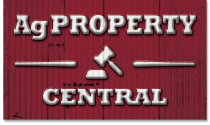In last week’s property review, independent property valuation and advisory group Herron Todd White suggested banks are currently offering attractive financial deals for the right clients to purchase farming assets with scale. This week, we continue the theme, looking at some of the other options in the lending market…
THE strong outlook in agricultural commodities continues to drive property sales this year.

Tim Lane, national director of agribusiness valuation firm, Herron Todd White
Herron Todd White national director rural, Tim Lane suggests the time might be right for many farmers and graziers to restructure current finances to get a better deal, or access additional capital.
“Four percent type borrowings today are supporting agriculture in terms of its operational returns. However, even at four percent interest, producers still have to pay their marginal tax rate to pay back debt. The true cost of borrowing money at that rate isn’t four per cent – it’s four percent plus whatever your marginal tax rate is.”
Mr Lane said from a property perspective, most agricultural land sales, activities and values had started to trend upwards.
“Apart from a couple of isolated areas, such as Western Queensland which is still subject to dry conditions, the property market will hold and ultimately firm,” he said.
Mr Lane said over the past 12 months, sales volumes in some agricultural areas had reached similar levels to those seen in 2004-05.
“The 2013 market was all about the receivers; the 2014 market was the start of the corporates coming in and starting to move forward; the 2015 market saw the local landholder turn up in the market place; and the 2016 market has so far seen landholders and corporates competing against each other,” he said.
“So we’ve seen a real shift from an oversupply of property, relative to a limited number of buyers, to an undersupply of property relative to demand – and that’s generally, most marketplaces around the country.”
Sharp increase in QRAA loans
Many primary producers in Queensland looking at alternatives to some of their loan structures have turned their focus to the QRAA (previously known as Queensland Rural Adjustment Authority) which offers two productivity loans with no fees or charges.
And it’s little wonder why. The NSW Rural Adjustment Authority provides concessional loans to rural producers, but only for drought and natural disaster.
The only comparable loan is the Victorian Young Farmers Finance Scheme (administered by Rural Finance in association with the Victorian Young Farmers’ Finance Council and the Victorian Government) which encourages the progression of well-qualified Victorian farmers into asset ownership.
Over the past 20 years in Queensland, there has been a notable increase in the number of QRAA loans. In 2015-16, loans worth $59.6 million were approved, up from $51 million the previous year.
QRAA customer relations manager Craig Turner said more than 50 percent of the authority’s loan book consists of beef producers, but grain producer numbers are growing.
“First Start is about getting producers into farming and buying their first property, or building up their stock numbers to become viable. The Sustainability Loan is focused on specific projects that a farmer may undertake. We are there to help people improve their viability, so if increasing the scale of their operation will do that, we are happy to lend,” he said.
Currently the maximum it can offer is $650,000 under the First Start and Sustainability Loans for Primary Producers. However, the Queensland Government has announced a “significant increase in the sums available through its Primary Industry Productivity Enhancement Scheme.”
Last month, state agriculture and fisheries minister Leanne Donaldson told a Senate Estimates hearing that the maximum amount an applicant may receive rises from $650,000 to $1.3 million for a Sustainability loan and up to $2 million for a First Start loan, reflecting the higher capital requirements in the industry.
Mr Turner said the increase was exciting news.
“Once the First Start Loan is lifted to $2m, more and more people will obtain the finance needed to buy their first property, a neighbouring property or another enterprise,” he said.
“Purchasing property on a staged basis allows off-farm income to service the loan. Then, the primary producer can use the Sustainability Loan to keep building the scale of their enterprise to improve productivity or long-term sustainability.”
Mr Turner said QRAA sometimes worked collaboratively with banks.
“Some projects need more than $650,000 so we will do joint lending with commercial lenders. We’re not there to compete with them. We are just there to ensure Queensland primary producers are becoming more viable.”
Ben Barratt who is responsible for ANZ’s Corporate Agribusiness portfolio for Queensland and the Northern Territory, said the QRAA had a role to play, particularly with attracting new property entrants or succession planning.
“QRAA doesn’t necessarily want those borrowers to be long-term clients. They want them to be commercially viable agribusiness producers that go on to bigger and better things. So ultimately they want the banks taking those clients off their hands over time.”

HAVE YOUR SAY